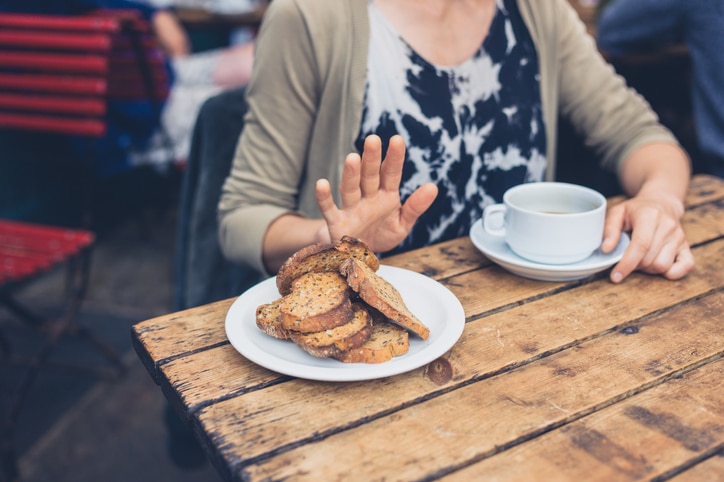Think you’re on a gluten-free diet?
If you eat at restaurants, you better think again.
A major study finds that a third of so-called “gluten-free” restaurant foods actually contain the wheat protein.
The research was conducted by Columbia University’s Celiac Disease Center. Armed with gluten sensors, more than 800 investigators went to restaurants around the country.
They looked for levels at or above 20 parts per million. Any food testing this high can’t officially be called gluten-free.
Hidden Gluten in Restaurant Foods
The project lasted 18 months and included 5,600 gluten tests.
On average, 27% of “gluten-free” breakfasts contained gluten. The number rose to 34% for “gluten-free” dinners.
“Gluten-free” pastas and pizzas were the worst offenders. More than half of them served at restaurants have gluten, researchers discovered.
About 1% of Americans have celiac disease. It’s a disorder which causes the immune system to attack the small intestine. Ingestion of gluten triggers a painful and damaging response.
But studies indicate even people without celiac disease can suffer from gluten sensitivity. This can cause intestinal pain, mood changes, and lethargy.
Dr. Benjamin Lebwohl was the study author. He points out that awareness of gluten illnesses has increased in recent years. Accordingly, restaurants “have sought to offer selections that are compatible with these restrictions. Some establishments do a better job than others at preventing cross-contamination.”
Dr. Lebwohl thinks pastas and pizzas are particularly problematic because the opportunities for cross-contamination are very strong for these foods. The study suggests “gluten-free” pizzas are often baked in the same ovens with regular pizzas. And “gluten-free” pasta is cooked in the same pots with regular pasta.
“These results underscore the need for education in food preparation at restaurants,” said Dr. Lebwohl. “And the need for diners to inquire about these precautions.”
3 Ways to Keep Gluten Out of Your Diet
Aside from the obvious—avoiding bread and other foods made with wheat, barley, or rye—here are a few gluten-free guidelines…
- Beware of hidden gluten. Gluten can lurk where you’d never expect it. It can be in gravy, salad dressings, soups, imitation meats or seafood, and seasoned rice mixes. Check labels carefully.iv
- Avoid cross-contamination. If you live with people who eat gluten, cross-contamination can be a problem. Be sure gluten-containing foods are stored and cooked separately.
- Be careful when you eat out. As revealed by the study, you’re taking a big chance if you eat certain restaurant foods, even if they’re supposed to be gluten-free. Stay away from “gluten-free” pizza and pasta in particular.
One more thing…
Sushi restaurants are often viewed as a safe haven for gluten-free eaters. After all, there is no wheat in rice or fish.
But beware of soy sauce. Most of it contains wheat. Ask for tamari instead. It’s a slightly thicker, denser gluten-free version of soy sauce.
Related Articles
An Extra Helping of Turkey May Help People With Gluten Issues

